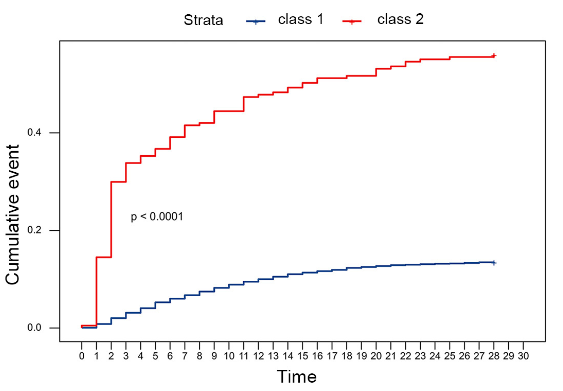Dynamic changes in lactate levels within the first 24 hours in septic patients as a prognostic indicator: A retrospective cohort study utilizing latent class growth analysis
DOI:
https://doi.org/10.17305/bb.2023.9259Keywords:
Latent class growth analysis (LCGA), the Medical Information Mart for Intensive Care-IV database (MIMIC IV), lactate, intensive care unit (ICU), mortalityAbstract
Elevated lactate levels are common in sepsis patients. This study aimed to assess the effect of dynamic changes in lactate levels within the first 24 hours following admission on patient prognosis. We extracted data from the Medical Information Mart for Intensive Care (MIMIC)-IV database and classified patients using latent class growth analysis (LCGA). This analysis classified sepsis patients into different groups based on dynamic changes in lactate levels during the initial 24 hours post-admission, dividing this time frame into four periods (0–3 h, 3–6 h, 6–12 h, and 12–24 h). The highest lactate level recorded in each period was then used for patient classification. We subsequently compared the baseline characteristics and outcomes between these different groups. Our study encompassed 7,830 patients, whom LCGA successfully divided into two classes: class 1 (steady lactate class) and class 2 (increasing lactate class). Class 2 demonstrated a worse clinical status at baseline, as indicated by vital signs, disease severity scores, and laboratory results. Importantly, class 2 also had a significantly higher 28-day mortality rate than class 1 (55.6% vs 13.5%, P < 0.001). In conclusion, LCGA effectively categorized sepsis patients into two distinct groups based on their dynamic changes in lactate levels during the first 24 hours post-admission. This methodology has potential utility in clinical practice for managing sepsis patients.
Citations
Downloads

Downloads
Additional Files
Published
Issue
Section
Categories
License
Copyright (c) 2023 Shifeng Li, Tao You, Meili Liu, Yan Hao, Xinyue Li, Zhiyang Wang, Fang Huang, Jun Wang

This work is licensed under a Creative Commons Attribution 4.0 International License.
How to Cite
Accepted 2023-07-05
Published 2023-11-03









